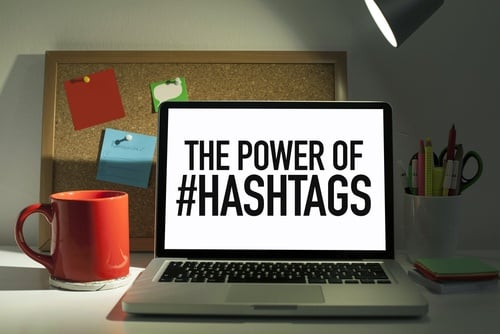Editor's note: Katherine Jacoby is a MBA student in the Mike Ilitch School of Business at Wayne State University in Detroit, MI and is enrolled in ISM 7994: Digital Content Creation. This post was originally published on Katherine's LinkedIn site.

The Hashtag:
Once known only as the pound symbol on a phone or the symbolic representation of number, now holds a place of prominence on most major social platforms. From social media novices to the experts designing the latest and greatest, users recognize the symbol as a method of categorizing and discovering posts and conversations. However, despite it’s spread across platforms, all hashtag uses are not created equal. Hashtags deliver different results depending on the platform used. With this in mind, it is important to understand how each platform views hashtags and how to optimize your use of them to enhance your content.
Twitter:
The hashtag’s hometown and the inspiration for use across platforms. Hashtags on Twitter are searchable, hyperlinked, and connect conversations across users. They are intended to group conversations based on trends, events, and common interests. 2-3 hashtags are the sweet spot on Twitter, driving conversations without looking spammy or eating up the 140 character limit. By leveraging ongoing conversations, trending terms (when appropriate), and live engagement such as Twitter chats, hashtags can become a valuable tool in your integrated digital strategy.
Facebook:
This platform may be king but due to its design and basic applications, hashtags do not thrive here. Hashtags on Facebook will aggregate conversations using the tag, but only from public posts or first-degree connections. With Facebook’s algorithm, content is also displayed in an inconsistent manner, based on latest interactions and how close you are to the poster. Limited hashtags are acceptable but a greater focus should be placed on optimizing content and targeting for increasing discovery.
Instagram:
Unlike its parent company Instagram embraces the hashtag, using it to drive trending topics, places, and images and connect similar posts. Hashtags are also not limited to the image caption; hashtagging the photo in a comment will add it to the hashtag’s curated images. While Instagram allows up to 30 hashtags to be used on an image, avoid excessive use that can make the post look like spam. A recent study by Max Woolf concluded that images with over eleven hashtags drove the greatest engagement, but many experts recommend 5-10 as the sweet spot.
Pinterest:
Pinterest is based on a love of discovering new things and ideas; and while hashtags have become a mode of discovery on other platforms, it is not so on Pinterest. Though the platform’s search engine has vastly improved from the early days of pinning, the system does not recognize hashtags as an independent search term. Searching a hashtag will bring back not only pins with the hashtag, but also pins that contain the hashtagged word. For example, searching #chocolate will bring back pins, boards, and pinners with “chocolate” in the name or description. It is also important to note that hashtags are only clickable within a pin’s description, and will yield the same results as searching the hashtag in the search bar. Focusing on detailed descriptions and engaging visual content will drive far more discovery of your pins than utilizing hashtags on this platform.
What is your best advice for hashtag use? Let us know in the comments.




